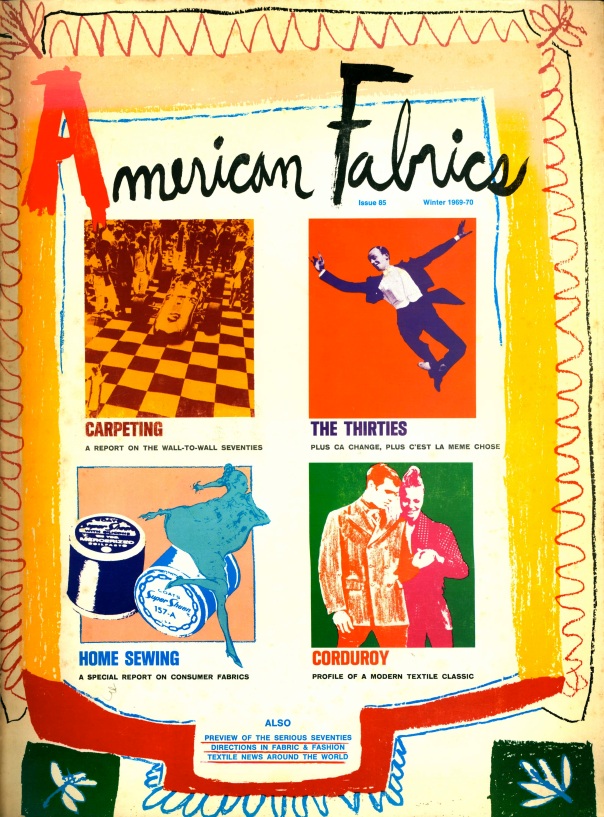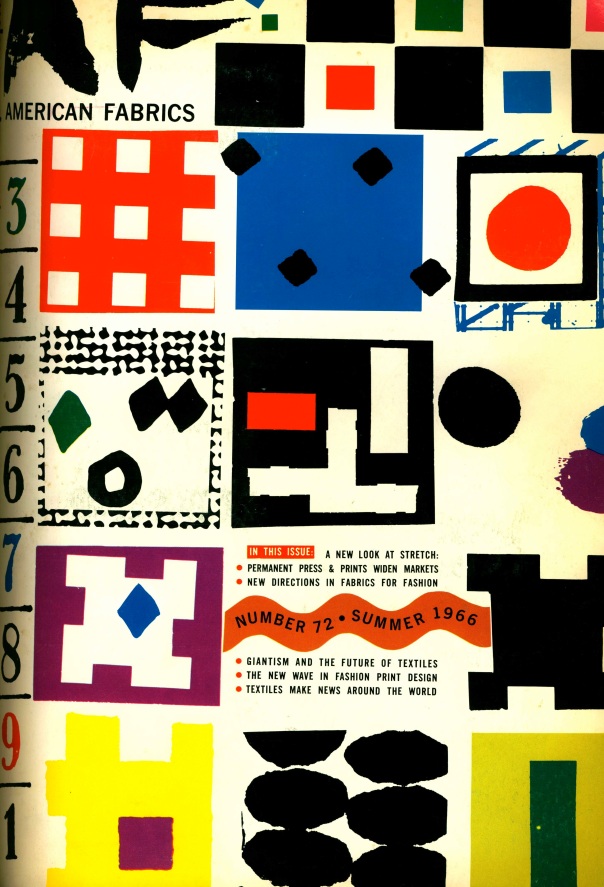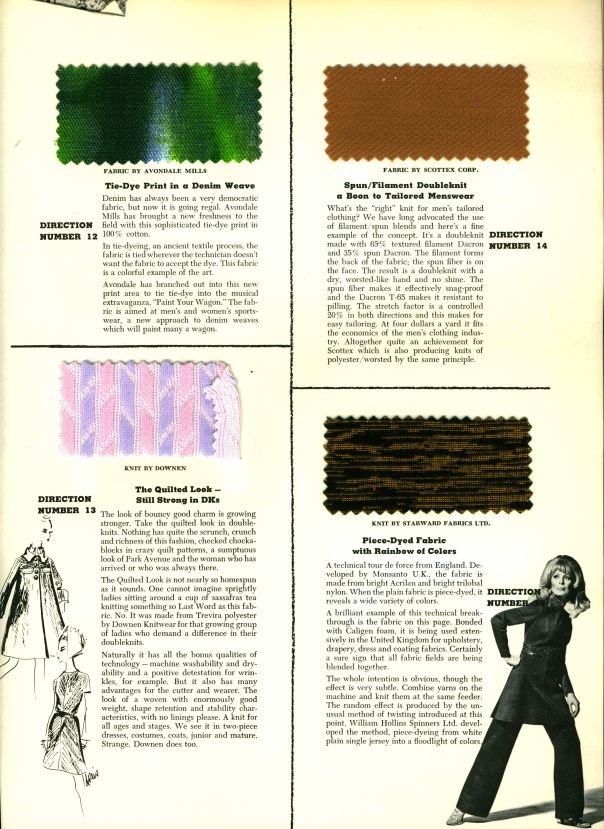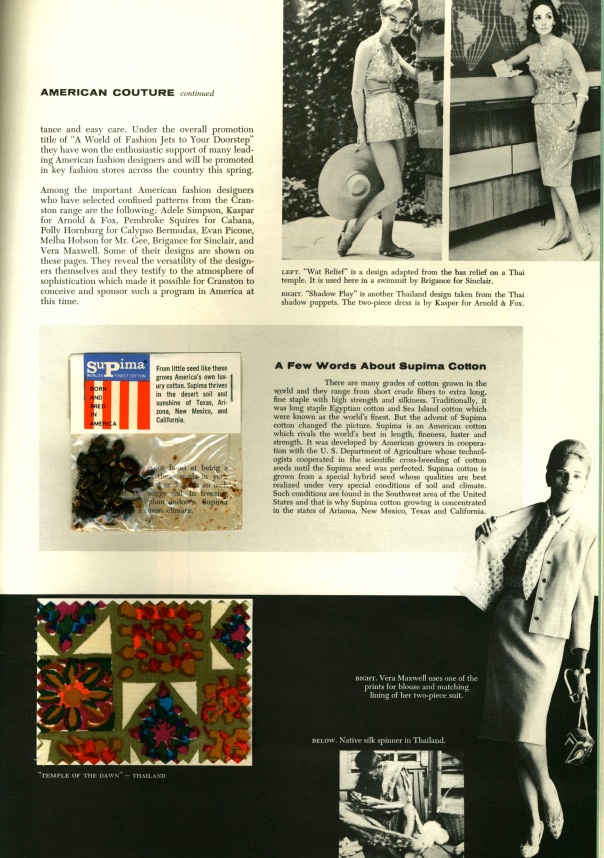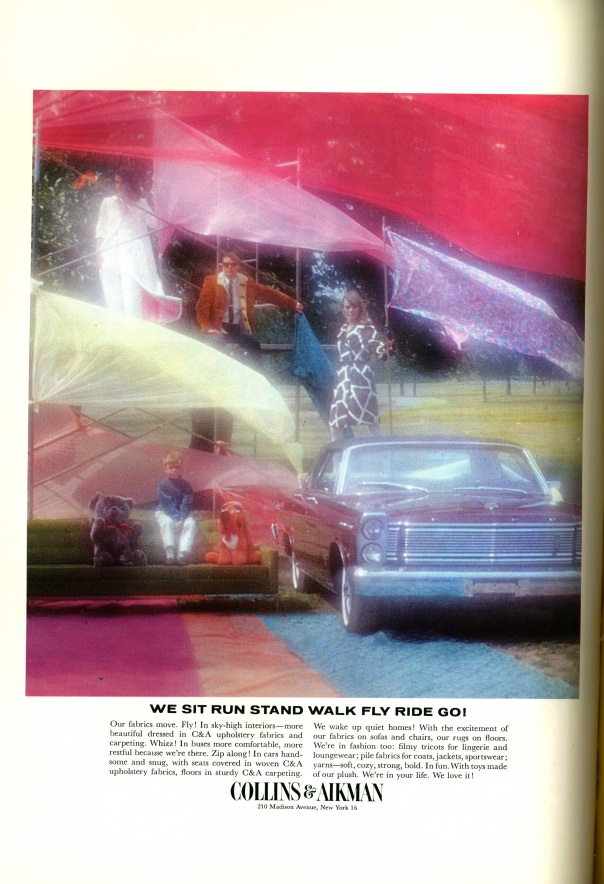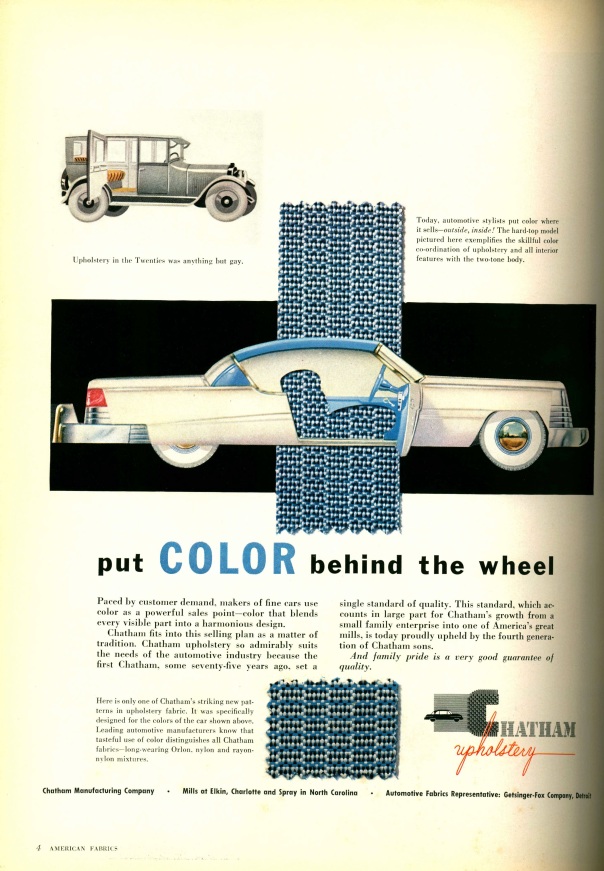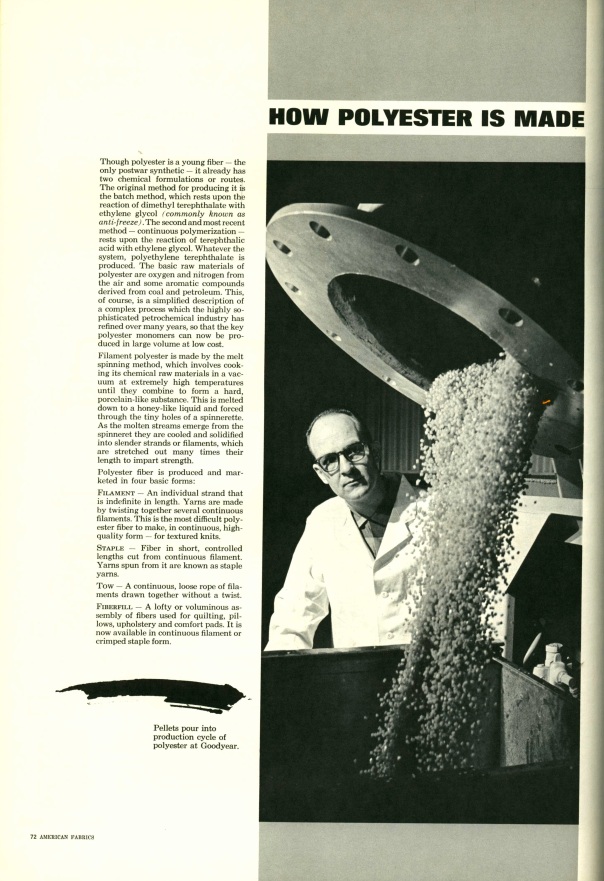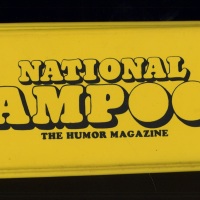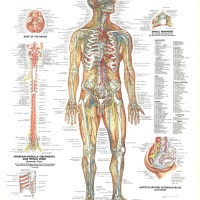Blog Archives
FiberArts
FiberArts features contemporary artists who work with fabric, weaving, sewing, dyes, textiles, embroidery, crochet, knitting, needlework and soft sculpture in order to produce works that boast both fine craftsmanship and fine art. Although expression and decoration with textiles is ancient, it was only fairly recently accepted in the fine arts world. The fibers revolution of the 1960’s led to a huge number of artists, both men and women, exploring and experimenting in a medium which was once labeled “women’s work” or pushed aside from the arts scene as mere craft.
In the library you will find 122 Issues of FiberArts from 1979 to the Summer 2011 issue, which was sadly the last.

FiberArts. November/December 1988.
Left: “Hanging Gardens of Babylon” by Anna Arbor. 1987. Saftey fence & Surveyor’s ribbon, woven and knotted.
Right: “The Neighborhood Nuisances” by Beth Holyoke. 1987. Ripstop Nylon & Applique.

FiberArts. November/December 1989.
Top: “Leopards” by Jean Hewes. 1988.
Bottom: “Edmond’s Fast Food” by Chris Wolf. 1989.

FiberArts. March/April 1982.
Machine-Knit garments by Betsy Lahaussios, Mickey Nushawg, Susanna Lewis, Jean Williams Cacicedo.

FiberArts. March/April 1982.
Left: detail of “Four in One” by Carole Beadle.
Right: detail of work by Lia Cook.

FiberArts. January/February 1983.
Top Left: Man’s Robe. Turkestan.
Top Right: “Charles Patless” by Pat Oleszko.
Bottom: “Stop and Go Dress” by Cynthia Pannucci.

FiberArts. January/February 1983.
Left to Right, Clockwise (Artists, not pictured): Jocelyn Turner, Judith Content, Judith Stein, Norma Rosen.

FiberArts. January/February 1983.
Clockwise from bottom left (artists, not pictured): Cate Fitt, Fraas/Slade, Yvonne Porcella, Ellen Haputli, Dina Knapp.
American Fabrics and Fashion
American Fabrics and Fashion (also called American Fabrics) was a commercial textile magazine created as a guide for manufacturers in the fabrics industry. In every issue there are dozens of physical fabric samples glued in, so in case you were wondering, “What did the 50’s feel like?”, here is the most literal answer to your question. Accompanying the samples are textile advertisements and sometimes the samples are even incorporated into the ads themselves. For anyone interested in fashion, textiles or all that is tactile, American Fabrics is a publication of great cultural and historical value.
We have 105 Issues of American Fabrics, 1946-1975.
FABRICS & SEWING — FABRIC SAMPLES
Not Ideas About Things But The Thing Itself
At the earliest ending of winter,
In March, a scrawny cry from outside
Seemed like a sound in his mind.
He knew that he heard it,
A bird’s cry, at daylight or before,
In the early March wind.
The sun was rising at six,
No longer a battered panache above snow…
It would have been outside.
It was not from the vast ventriloquism
Of sleep’s faded papier-mache…
The sun was coming from the outside.
That scrawny cry–It was
A chorister whose c preceded the choir.
It was part of the colossal sun,
Surrounded by its choral rings,
Still far away. It was like
A new knowledge of reality.
–Wallace Stevens
A subcategory of FABRICS & SEWING, FABRIC SAMPLES is unique to its 909 other cousin subjects in this Picture Collection family. Why? Because these are not visual representations of fabric samples, they are fabric samples. Now, that doesn’t mean that through photocopying, scanning, or rendering their likeness with your hand that you cannot transform these textured colors and colored patterns into pictures, or otherwise appropriate their likeness for your own creative ends. In fact, this is all just an invitation to do just that. Examples and examples follow:
Incidentally, you can find the above, and many other Wallace Stevens poems, in your library:
| Location: | Main Stacks |
|---|---|
| Call Number: | PS3537.T4753 A6 1997 |

































